Ring with floral micromosaic printed in 18k gold. Two bands connected by a single top, in
reference to ceremonial jewelry from Ancient Egypt and Byzantine traditions. Made in 18k gold
with White Diamonds totaling 0.35 cts.
Price uopn request.
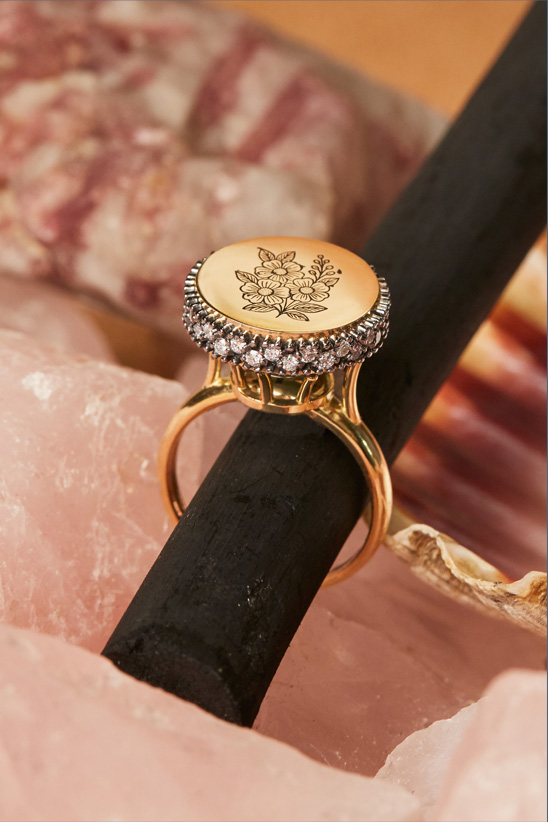
In Italian, vetro means glass—a material that captures light, reflects time, and reveals layers of color and memory.
In the Vetro collection, past and present converge, creating pieces imbued with significance and
story.
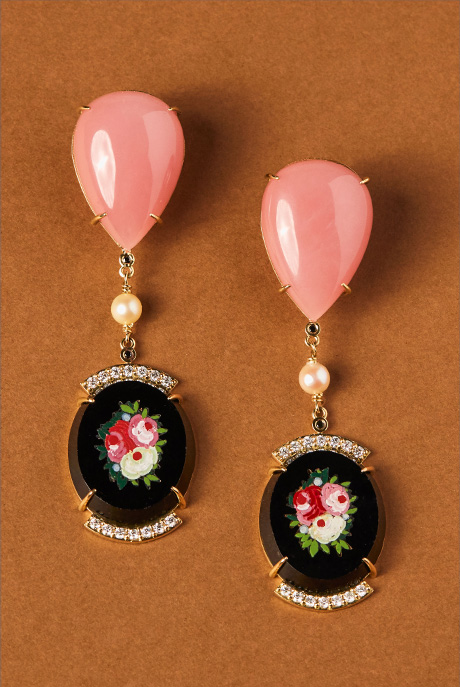
Mosaics stand as a testament to the human ability to create meaning from fragments. Since
ancient Roman and Byzantine civilizations, this artistic technique has been used to construct
images that captivate and endure, each a reflection of its maker’s imagination and skill.
During her travels, creative director Ana Damous encountered fragments that would become the
essence of this collection. Each mosaic and gem was chosen not merely for its beauty but for its
capacity to convey a singular, renewed story.
The influence of Venice, with its stained glass that transforms light into vibrant, shifting color,
also guided the selection of gems. Chosen for their transparency and luminosity, the stones
echo the effect of filtered light seen in Venetian glass mosaics. Symmetrical compositions
converse with Victorian aesthetics, whose subtle presence shapes the contours of the
collection.
The pietra dura technique, used in two of the central pieces, is notable for its precisely fitted
hard stones that create continuous surfaces. The result is a solid, almost architectural
construction. In contrast, the Venturini technique, focused on the juxtaposition of textures and
materials, introduces tactile and freer compositions that challenge that structure.
In the collection’s rings, micromosaics transcend their static surface and evolve into
three-dimensional objects, opening new ground for their presence in space.
Each design originates from a reference. The double-band model draws from ceremonial
Egyptian and Byzantine jewelry that symbolized unity or intention. The medallion ring evokes
the symbolic role of signets, seals, and sentimental lockets. The pierced shank reimagines
vinaigrettes rings used to hold solid perfumes. And the inverted model repositions the stone at
the base, reorienting the gaze.


Ring with floral micromosaic printed in 18k gold. Two bands connected by a single top, in
reference to ceremonial jewelry from Ancient Egypt and Byzantine traditions. Made in 18k gold
with White Diamonds totaling 0.35 cts.
Price uopn request.


Pair of earrings featuring late 19th-century Italian floral micromosaic. Crafted in 18k yellow gold,
with round cabochon Onyx totaling 38.65 cts, Chrysoprase totaling 7.65 cts, and round-cut
Lapis Lazuli totaling 6.2 cts.
Price upon request.

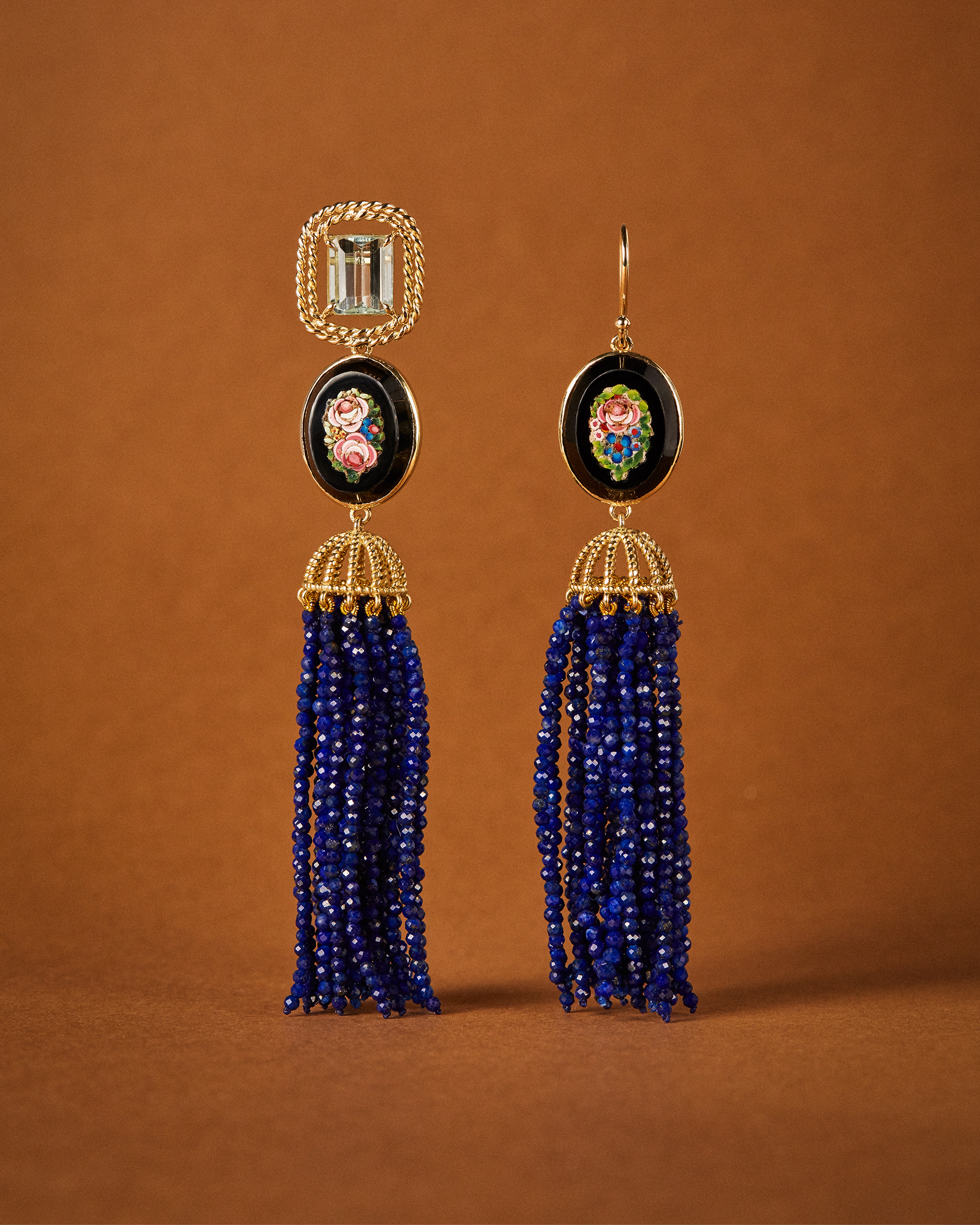
Pair of earrings featuring late 19th-century Italian floral micromosaic. Crafted in 18k yellow gold,
with cascading strands of Afghan Lapis Lazuli totaling 91 cts and Aquamarine totaling 6 cts.
Price upon request.


Ring with floral micromosaic printed in 18k gold. Design evokes old signet rings and sentimental
medallions in European jewelry. Made in 18k gold, 5mm Japanese Pearl, and White Diamonds
totaling 0.11 cts
Price uopn request.


Bracelet featuring late 19th-century Italian floral micromosaic. Crafted in 18k yellow gold, using
twisted wire technique.
Price uopn request.


Pair of earrings featuring late 19th-century Italian floral micromosaic. Crafted in 18k yellow gold,
with drop cabochon Guava Quartz totaling 63.2 cts, 5mm round Pearls, and White and Black
Diamonds totaling 0.62 cts.
Price uopn request.

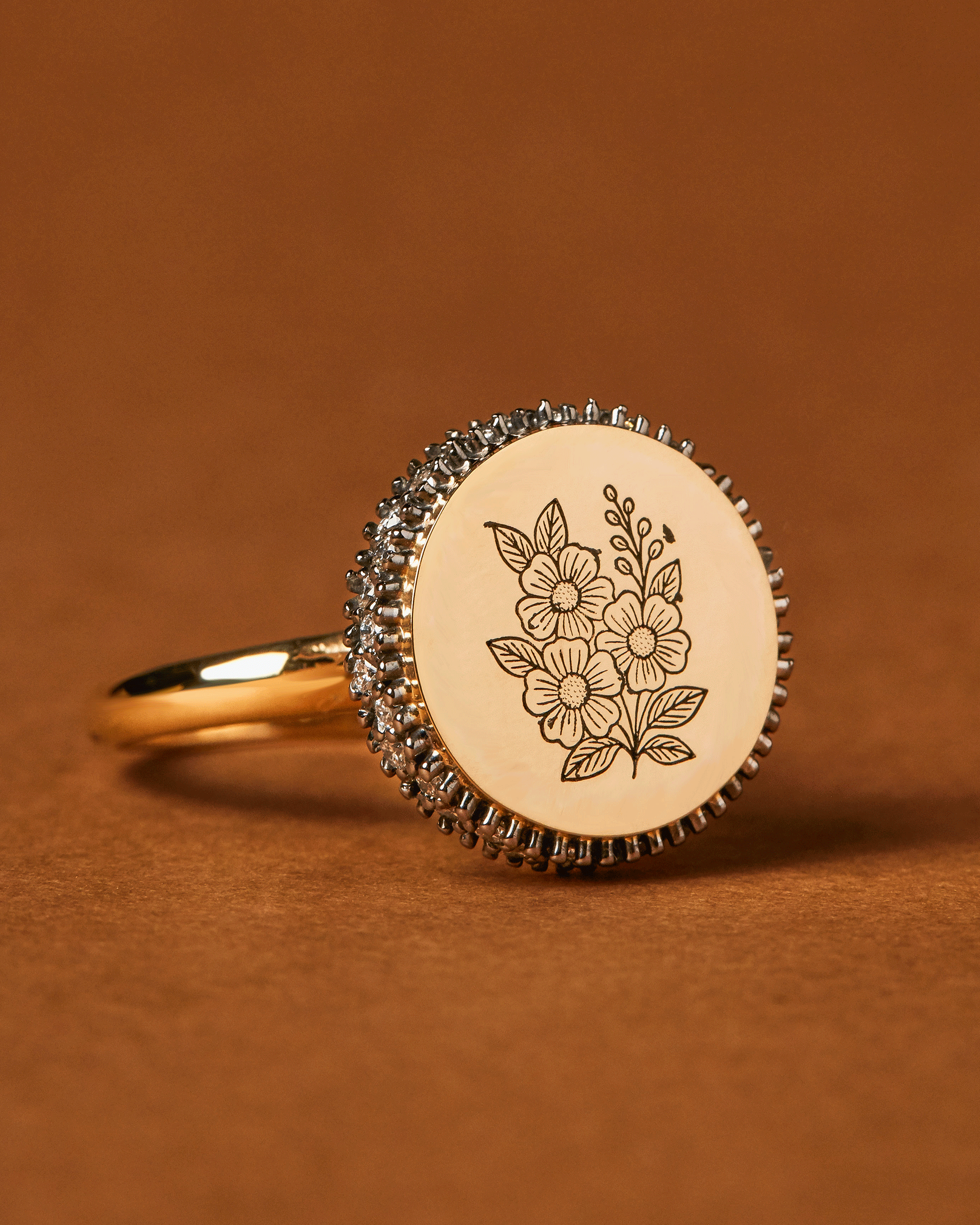
Ring with floral micromosaic printed in 18k gold. Concave structure with an inverted base that
enhances volume and depth. Made in 18k gold, round cabochon Aquamarine totaling 14 cts,
and White Diamonds totaling 0.51 cts.
Price uopn request.


Pair of earrings featuring late 19th-century Italian floral micromosaic. Crafted in 18k yellow gold,
with drop-cut Lapis Lazuli totaling 23.8 cts, oval Green Tourmaline totaling 3.8 cts, and White
Diamonds totaling 0.7 cts.
Price uopn request.

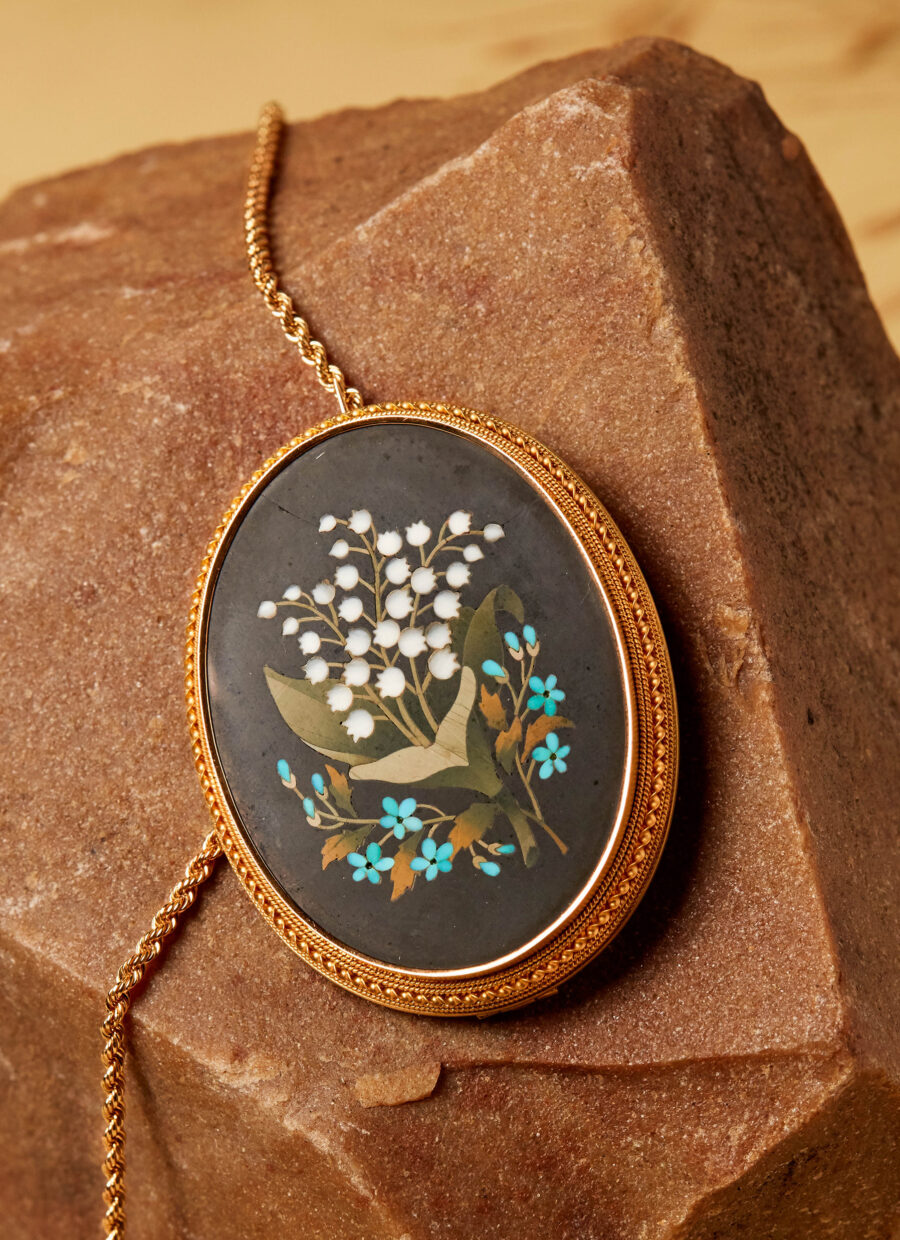
Pendant or brooch featuring floral micromosaic in the Italian pietra dura technique, carved from
a single stone using Agate, Turquoise, Jasper, and Black Marble, 19th century. Set in 18k yellow
gold with original antique frame and Italian twisted wire chain.
Price uopn request.


Pair of earrings featuring late 19th-century Italian floral micromosaic. Crafted in 18k yellow gold,
with drop cabochon Aquamarine totaling 23 cts, Indian-cut Peridot totaling 10 cts, and Black
Diamonds totaling 1.53 cts
Price uopn request.


Jewelry piece featuring late 19th-century Italian floral micromosaic. Crafted in 18k gold, with
round cabochon Carnelians totaling 3.8 cts, 7mm vintage Pearls, and White Diamonds totaling
0.03 cts. Adjustable clasp allows use as either a necklace or bracelet.
Price uopn request.

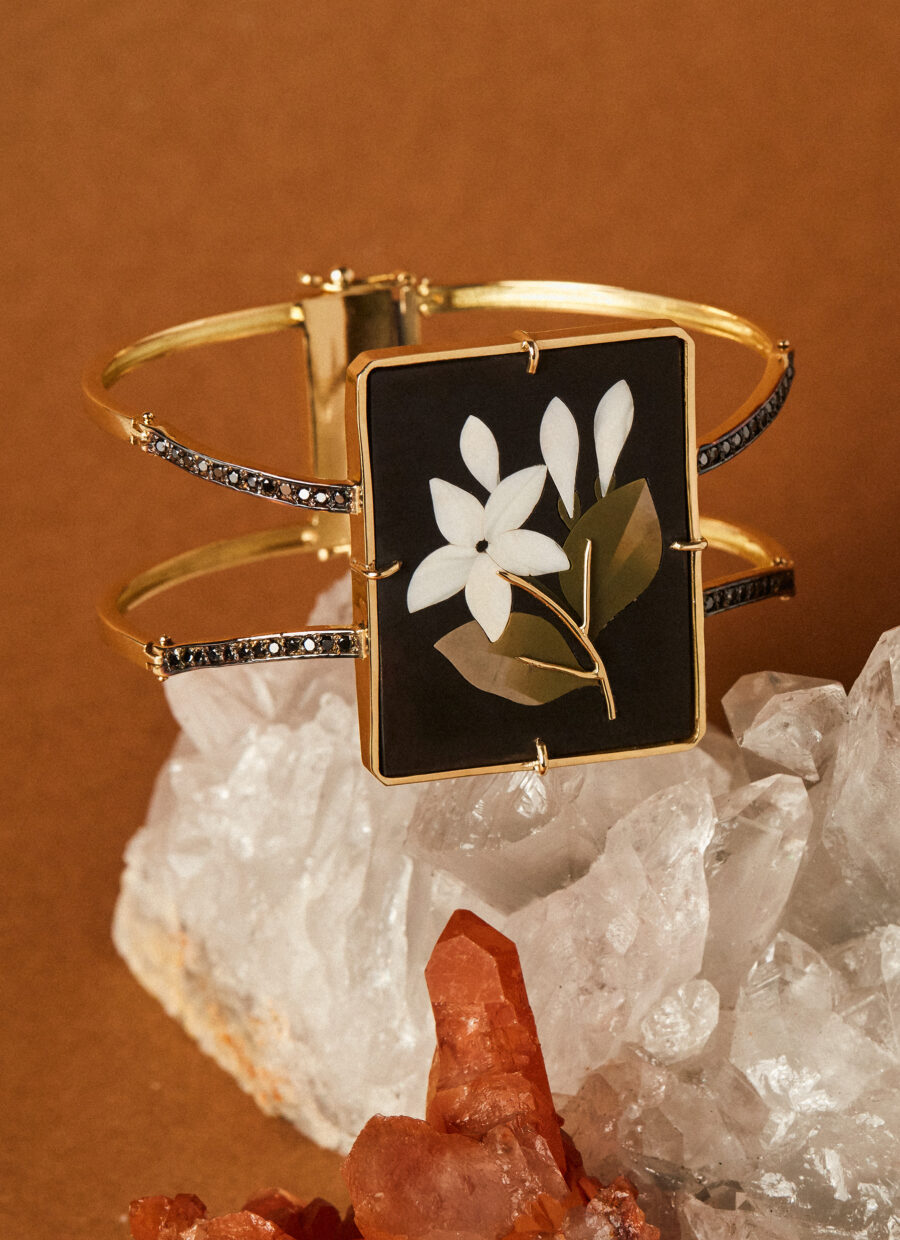
Bracelet featuring pietra dura Italian micromosaic technique, carved from a single stone using
Agate, Jasper, and Black Marble, 19th century. Crafted in 18k gold with Black Diamonds totaling
0.72 cts.
Price uopn request.


Brooch featuring late 19th-century Italian floral micromosaic in Murano glass. Combines
traditional mosaic with fused colored glass filaments. With round cabochon Onyx totaling 47.5
cts, and White Diamonds totaling 0.12 cts.
Price uopn request.


Ring with floral micromosaic printed in 18k gold. The rotatable top, set on a twisted wire shank,
reveals two faces: one with a floral motif and the other with a Lapis Lazuli plaque. Design
inspired by the 19th century. Made in 18k gold with White Diamonds totaling 0.03 cts.
Price uopn request.


Pair of earrings featuring late 19th-century Italian bird micromosaic. Crafted in 18k yellow gold,
with oval cabochon Aquamarines totaling 31.5 cts, rectangular Citrine totaling 6.25 cts, 5mm
cultured vintage Pearl, and Tsavorites totaling 0.12 cts.
Price uopn request.

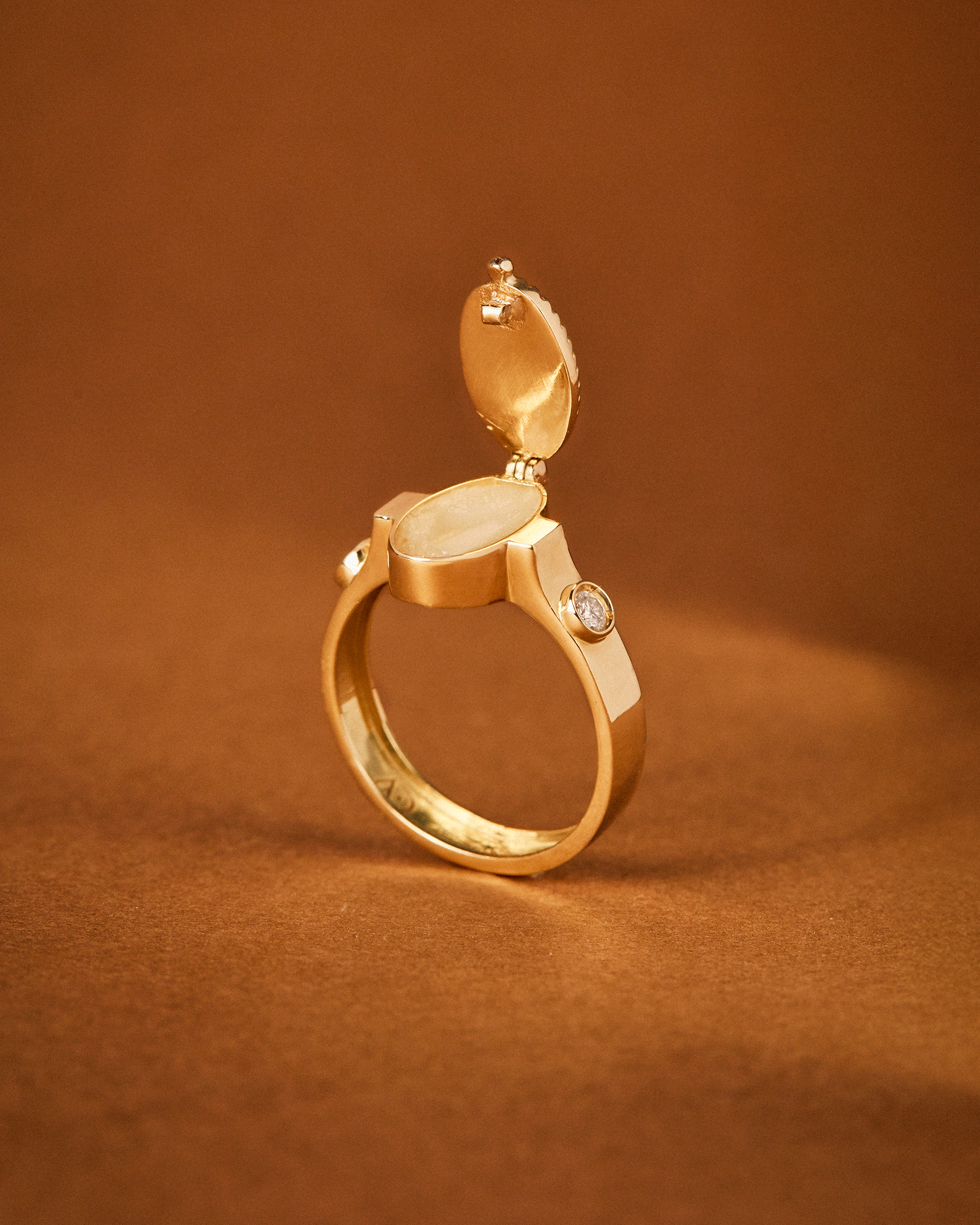
Ring with floral micromosaic printed in 18k gold. Delicate bands and a lidded top, inspired by
19th-century aromatic rings designed to hold essences. Made in 18k gold with White Diamonds
totaling 0.03 cts.
Price uopn request.

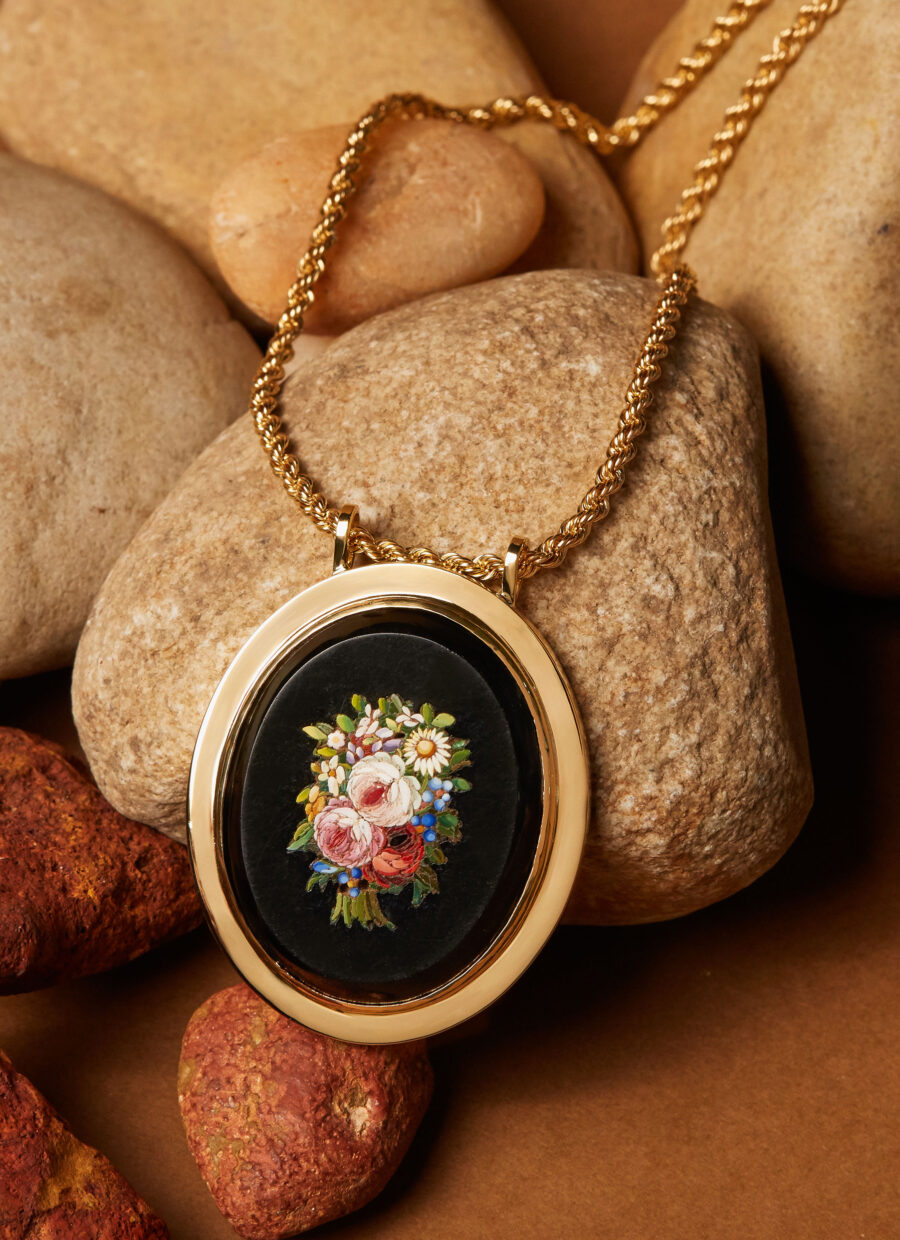
Necklace featuring late 19th-century Italian floral micromosaic. 18k yellow gold medallion, with
twisted wire chain handcrafted in Italy.
Price uopn request.


Pair of earrings featuring late 19th-century Italian floral micromosaic with Aventurine, a variety of
quartz known for its natural shimmer. Crafted in 18k yellow gold, with oval cabochon Carnelian
totaling 13.5 cts, oval Peridot totaling 3.25 cts, 5mm vintage Pearls, and Black Diamonds
totaling 0.48 cts.
Price uopn request.

© 2025 A. DAMOUS JEWELRY – ALL RIGHTS RESERVED